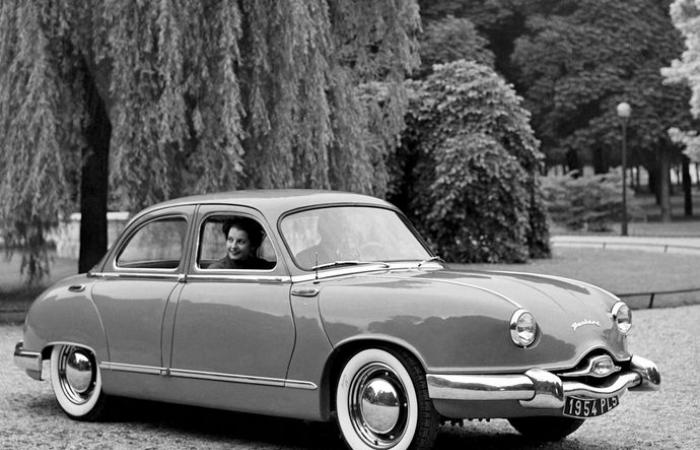A Cx of 0.27. This is theamazing aerodynamics offered by the Panhard Dyna Z in 1954, the year when customers could finally take possession of it. Indeed, although it was presented on June 17, 1953, it had to wait several months for its industrialization to be finalized. Buyers were impatient because the Panhard promised a lot. Indeed, its revolutionary air penetration coefficient guaranteed a very high maximum speed for the time, especially given the low power of its engine: 42 hp. It was announced at 130 km/h, when a Citroën Traction 11 CV barely exceeded 100 km/h, and a Peugeot 203 115 km/h.
It must be said that the Dyna Z, which the small Dyna The Z, designed by Louis Bionier, later author of the Panhard 24 and… the Citroën Dyane, reveals itself ultramodern for 1954and can comfortably accommodate 6 passengers in its 4.57 m long body.
Despite this substantial length, the Panhard is extraordinarily light thanks to its made from Duralinox, an aluminum alloycopper and magnesium: 710 kg! The body (100 kg with the openings) as well as the chassis are cut from this material, with the exception of a support and a cross member, located at the front and made of steel.
Consequence of this lightness combined with a twin-cylinder of only 850 cm3 but with haut rendement, consumption is very low, announced at 6 l/100 km! Unprecedented on such a large car. Don’t conclude from this that this Dyna Z is ridiculous in the event of an impact. On the contrary, it benefits from good general rigidity and is equipped with a padded dashboard, far from passengers and with soft shapes. Integrating the controls, again, this is unheard of at that time, it is supposed to protect the passengers in the event of an impact, especially since there are no seat belts (these did not exist then for so to speak not).
Well received by the press, comfortable, fast, frugal and holds the road very well, the Panhard Dyna Z has everything to succeed. Well, almost… Its industrialization, very complex, was botched. Manufacturing costs, following accounting errors, were undervalued, and the brand lost money on each car sold. Worse, The overall quality is random and varies between acceptable and deplorable.. Caught by the throat, Panhard chose to improve profitability by gradually replacing Duralinox with steelr, much cheaper.
Subscribe to the Caradisiac newsletter
Receive all the automotive news
I agree to receive partner offers
Register
The email address provided in this form is processed by GROUPE LA CENTRALE as data controller.
This data is used to send you information about our offers, news and events (newsletters, alerts, invitations and other publications).
If you have accepted, this data will be transmitted to our partners, as data controllers, to allow you to receive their communications electronically.
You have the right to access, rectify and erase this data, the right to limit processing, the right to object, the right to the portability of your data and the right to lodge a complaint with a supervisory authority (in France, the CNIL). You can also withdraw your consent to the processing of your data at any time. To find out more about the processing of your data: www.caradisiac.com/general/confidentialite/
As a result, for 1956, the Panhard only kept this alloy for the openings, then the entire car switched to steel. As a result, the Dyna Z becomes considerably heavier, climbing to 875 kg. Consumption increases, performance drops (barely over 120 km/h) but quality improves. That said, sales are not following, despite the adoption in 1959 of the Tiger engine, boosted to 50 hp just before the end of production. In all its variants (sedan, convertible, utility vehicles), the Dyna Z was only manufactured in just over 140,000 unprofitable units.
This leads to a total takeover of Panhard by Citroën in 1965, even if the PL17, an evolution of the Dyna Z, launched in 1959, is not without merit. It has long been known that weight reduction, aerodynamics and high engine efficiency constitute a formidable formula for reducing the energy needs of cars. The issues of very large-scale production of aluminum models and their cost price have not been resolved, as the Audi A2 showed almost 50 years later. The fact remains that with the hundreds of billions of euros swallowed up in a few years by theelectrification of carscarried out in a forced march, we could certainly have found viable solutions…






